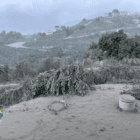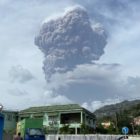Homepage Featured
Agriculture under the shadow of La Soufrière
|
A CIJN Special Report
On April 9, 2021, at exactly 8.41 a.m., St Vincent and the Grenadines entered a period in its history its population had hoped would never again occur – almost 42 years to the day since an April 13, 1979 event of similar magnitude, and over 100 years after the 1902 eruption of La Soufrière volcano that killed close to 1,700 people. La Soufrière is a conical volcano forming the highest peak in the northern third of the main island of St Vincent which covers 133 square miles with a population of around 110,000. The volcano has had five significant eruptions in 1718, 1812, 1902, 1979, and 2021. At the time of the most recent explosive events, the country had established itself as a sub-regional leader in the production of root crops and tubers, fruits, and vegetables, supplying nearby territories with regular shipments that earned significant national revenue. It had also considered a vibrant future in the cannabis industry with the establishment of a Medicinal Cannabis Authority.





